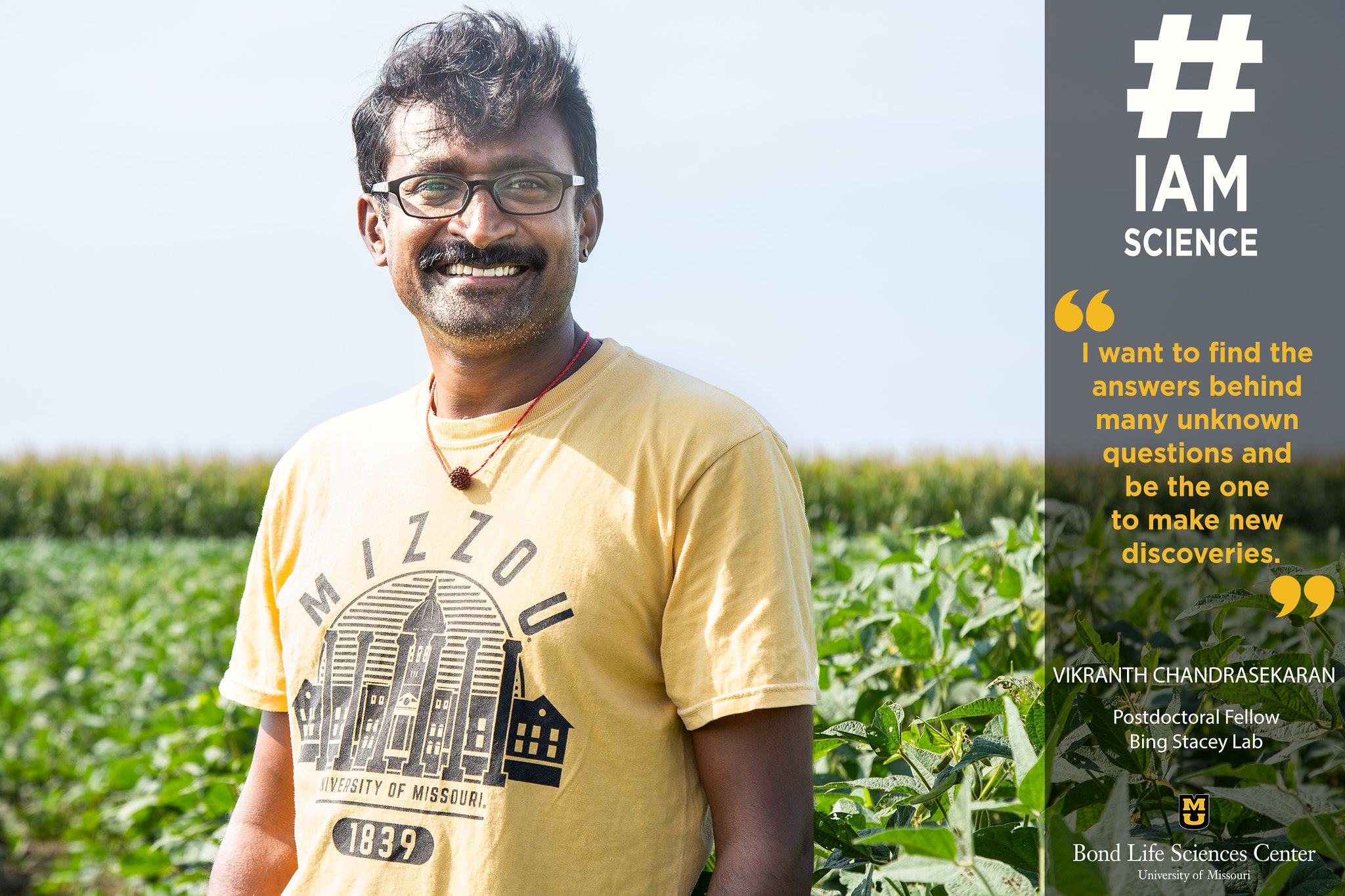With a forceful swing of his badminton racket, Vikranth Chandrasekaran propelled the shuttles across the court. A game with coworkers and friends is the perfect way to wrap up a day in the lab for the postdoctoral fellow. He’s offered to teach his colleagues the strategies of badminton at the University of Missouri Rec Center.
“When I initially embarked on my journey in badminton as a beginner, I received invaluable assistance and guidance from numerous South Korean individuals who graciously taught me the proper techniques,” he said. “Now, I feel compelled to reciprocate this kindness by offering my help to those who aspire to learn badminton.”
As a postdoc in the Bing Stacey lab at Bond LSC, Chandrakaran has the opportunity to help others through soybeans, and his path here started in South Korea with Gary Stacey.
During the joint venture conference between the University of Missouri, USA and Gyeongsang National University, South Korea, Chandrasekaran found Stacey’s research talk fascinating and made him want to visit Bond Life Science center.
“I want to find the answers behind many unknown questions and be the one to make new discoveries,” Chandrasekaran said.
Chandrasekaran is from a land of gold mines: Karnataka, India. Coming from Kolar Gold Fields, he can appreciate searching for the nutrients within our food and his past planted the seed for his future.
“My motivation for what I do comes from my strong determination and passion towards plant science for the betterment of humankind that I have,” Chandrasekaran said. “My childhood aspiration was to achieve the highest degree in the scientific field, a doctoral degree, and with unwavering support from my parents I was able to realize that dream.”
Chandrasekaran deals with soybeans and the macronutrients they provide. Soybeans are an important source of protein for a vegan diet especially, with a single seed consisting of 40% protein and 20% oil. The crop is a leading source for vegetable oil and protein production, providing 60% of global oilseed production and more than 25% of the in food and animal feed worldwide.

“Engaging with academic theories for research proved to be profoundly challenging because they often neglected the intricate trial-and-error nature inherent in research endeavors,” Chandrasekaran said. “But research entails a myriad of trial-and-error processes, involving a multitude of fine-tuning techniques that extend beyond the scope of conventional academic teachings. These trial-and-error methods lead me to learn more and help me to solve a problem in my research in a more effective way.”
In the Stacey lab he finds the genes responsible for high protein and oil content in order to then edit DNA to increase the amount of protein and oil contained in the plant. Less than 30% of the genes in soybeans and 70% of those in rice have been identified, so Chandrasekaran aims to find more.
“I was first fascinated with research because of the DNA double helix structure and how we analyze things like that,” he said. “I was always focused on the theoretical part of academics, but then all of the sudden I was really curious about the research side as well.”
When he screens the soybean plants for genes, he pays attention to the visible phenotypes, that the plant makes in response to a procedure using fast neutron radiation (ϒ rays or gamma rays), which is often used in cancer patients to treat tumors. For each phenotype there are many genes competing to express themselves, so Chandrasekaran deciphers which traits are likely distinct, or abnormal phenotypes, when compared to normal soybean plant.

He finds a calmness in this type of work much like the tranquil feeling he experiences when he travels to places such as the Rocky Mountains.
“The drive was about 13 hours and that scared me at first,” he said. “But when I was driving, I was calm and got to experience for the first-time incredibly beautiful scenery that I had never seen before which made the drive worth it.”
He also frequently makes the 405-mile trip to Chicago to visit his childhood friend and their family each month. A long drive gives Chandrasekaran time to think and makes him more motivated about his work when he returns.
“Taking short breaks from continuous lab and field work helps me to feel happier, have more energy and focus more on my research,” Chandrasekaran said.
He uses travelling and a game of badminton with coworkers and friends to wrap up a day in the lab or take time to think on the road he is paving to making scientific discoveries. He hopes to continue his work in the field and secure a position as a crop scientist or to start a research lab of his own one day.


